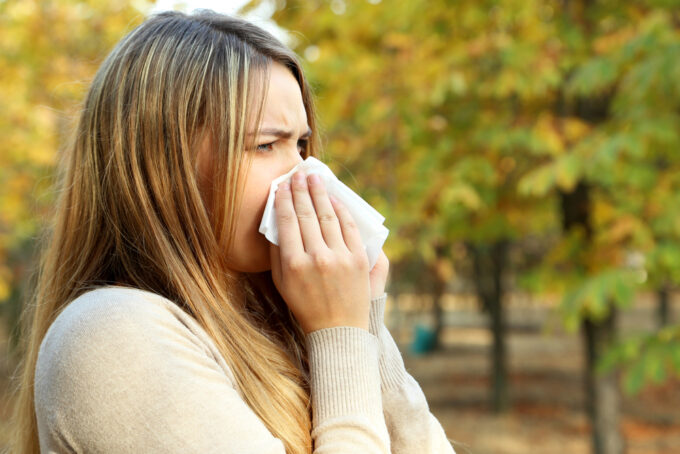Pollen allergy: These factors aggravate hay fever
Itchy eyes, runny nose, constant sneezing: A pollen allergy is a torment for those affected. Unfortunately, there are factors that can make the symptoms even worse. The Allergy Center Switzerland provides information.

Earlier warmer: Climate change is altering the start of flowering: hazel is about two to three weeks earlier than 30 years ago. The season of birch and ash also shifts forward by two to three weeks. Grasses are in bloom about ten days earlier in May, and certain plants bloom longer into the fall. Depending on which plants one is allergic to, this can significantly prolong the period of suffering.
New plants - more allergies: With the warmer temperatures, the vegetation in Switzerland is also changing. For example, the allergenic birch tree could spread to higher altitudes in the future, resulting in more pollen in the mountains. In addition, new allergenic plants from the Mediterranean region could become native to Switzerland, such as the olive tree, cypress or glasswort, which will bring new allergy triggers.
More stress - more pollen: Normally occur Mast yearsyears, i.e. years in which trees produce more flowers and thus more pollen, occur at regular intervals. These vary depending on the tree species. Studies now show that the mast years are becoming more frequent. Spruce, for example, actually blooms more every six years - but in recent years it has had a mast year in both 2020 and 2022. Researchers believe that climate change may be to blame. With less precipitation, plants suffer from a lack of water and produce more pollen to ensure their continued existence in this emergency situation.
In a thunderstorm: Right at the beginning of a thunderstorm, downdrafts push and wash down pollen from the higher layers of air. The result: the pollen concentration rises rapidly near the ground. The extreme humidity causes the pollen to soak up water until it bursts. This releases many small, allergenic particles that can penetrate even deeper into the respiratory tract and lead to more severe symptoms.
More aggressive and sensitive to air pollutants: With every breath, air pollutants (particulate matter, nitrogen dioxide, ozone) enter the respiratory tract, where they irritate the mucous membranes, making it easier for allergens to enter the body. This can aggravate the symptoms of a pollen allergy. But that's not all: pollen in polluted air is covered with pollutant particles and its allergens are altered - which can intensify their effect.
Caution Sahara dust: Sahara dust from the desert areas in North Africa blowing into Switzerland can happen from time to time. Pollen allergy sufferers and asthma sufferers need to be careful. The dust particles are so tiny that they can additionally irritate the respiratory tract, trigger coughing and thus intensify the symptoms.
Source: Allergy Center Switzerland
Pollen data in real time and forecast are available here









